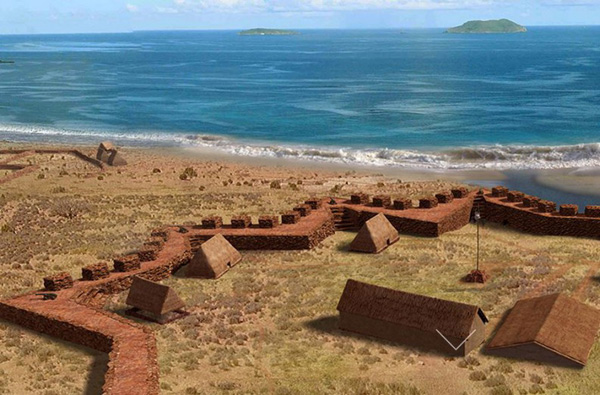

Peter Mills, professor of anthropology at the University of Hawaiʻi at Hilo, along with Russian colleague Alexander Molodin, dean of the Novosibirsk State Academy of Architecture, have been recognized by the Historic Hawaiʻi Foundation for their outstanding preservation efforts related to Fort Elizabeth on Kauaʻi.
Mills and Molodin have received a Preservation Commendation Award from the foundation, Hawaiʻi’s highest recognition of preservation projects that perpetuate, rehabilitate, restore or interpret the state’s architectural, archaeological and/or cultural heritage.
The fort, built largely by Hawaiian hands, was part of King Kaumualiʻi’s residential compound and was never really occupied by the Russians as the commonly used name “Russian Fort” implies. Instead, Mills’s 2002 book, Hawaiʻi’s Russian Adventure, demonstrates that this was really Kaumualiʻi’s fort, built as part of his Russian alliance to maintain Kauaʻi’s sovereignty from Kamehameha. As such, its unique architecture reflects much about Hawaiian culture in the early 19th century and very little about Russians.
In the Fort Elizabeth Architectural Reconstruction Study, Mills and Molodin use modern computer technology and 3D modeling to reconstruct the appearance of the fortress in detail, including its separate structures and its position relative to the existing natural landscape. This allows the researchers to also analyze the fort’s defense options.
In the letter notifying the two researchers of the award, Kiersten Faulkner, executive director of the Historic Hawaiʻi Foundation, states: “The results of the study provide a more public visibility to this monument, which was created by a fusion of Russian, American and traditional Hawaiian cultures. It also provides some estimates for what would be necessary to design and complete a full-scale restoration of the fortress.”
The foundation’s Honor Awards Committee recommends the study be combined with the team’s other scholarly works “in order to make a proposed reconstruction design solution and budget documentation for a full-scale restoration of the fortress and present it to the land owners.”
“We congratulate you on your exemplary preservation efforts,” states Faulkner.
The two scholars will receive their award at the 2015 Preservation Honor Awards Ceremony held by the Historic Hawaiʻi Foundation on May 29 in Honolulu.
—By Susan Enright

